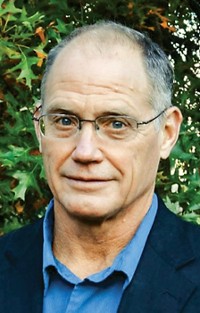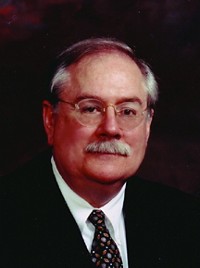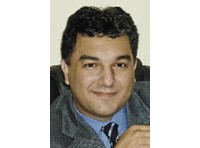Advertisement
Grab your lab coat. Let's get started
Welcome!
Welcome!
Create an account below to get 6 C&EN articles per month, receive newsletters and more - all free.
It seems this is your first time logging in online. Please enter the following information to continue.
As an ACS member you automatically get access to this site. All we need is few more details to create your reading experience.
Not you? Sign in with a different account.
Not you? Sign in with a different account.
ERROR 1
ERROR 1
ERROR 2
ERROR 2
ERROR 2
ERROR 2
ERROR 2
Password and Confirm password must match.
If you have an ACS member number, please enter it here so we can link this account to your membership. (optional)
ERROR 2
ACS values your privacy. By submitting your information, you are gaining access to C&EN and subscribing to our weekly newsletter. We use the information you provide to make your reading experience better, and we will never sell your data to third party members.
People
Ernest Guenther Award In The Chemistry Of Natural Products
Sponsored by Givaudan
by Carmen Drahl
January 4, 2010
| A version of this story appeared in
Volume 88, Issue 1
For Michael T. Crimmins, inspiration comes from many places. The ocean, the source of many of the natural products he's synthesized, is one. His experiences as a student are another.
Crimmins, 56, the Mary Ann Smith Professor of Chemistry at the University of North Carolina, Chapel Hill, is being honored for his sustained record of achievements in the synthesis of architecturally complex natural products. His "scholarship, integrity, and attention to detail, as well as his unwavering commitment to solving some of the most difficult problems in synthesis set him apart," says James D. White, Distinguished Professor of Chemistry Emeritus at Oregon State University. "He is the very model that every student in pursuit of a career in synthetic organic chemistry should aspire to."
Crimmins earned a B.A. in chemistry with honors at Hendrix College in Arkansas. From there, he moved to Duke University, where he received his Ph.D. in 1980 under the guidance of Steven W. Baldwin. "We worked very closely together. He was a great mentor to me," Crimmins says. In Baldwin's group, he used photochemical processes to make molecules, a theme he expanded upon in his independent career.
In particular, Crimmins has perfected intramolecular light-promoted ring-forming reactions between an α, β-unsaturated ketone and an olefin on the same molecule. In the reaction, preexisting chiral centers on a tether between the reacting moieties control the stereochemical outcome.
The biggest showcase for those innovations is Crimmins' 1999 synthesis of ginkgolide B, a densely functionalized natural product from the ginkgo tree, says Amos B. Smith III, the Rhodes-Thompson Professor of Chemistry at the University of Pennsylvania. "It is truly a landmark achievement and is, I believe, deserving of recognition of the Ernest Guenther Award in and of itself," Smith says. "This synthesis has become a standard of strategic planning now included in most, if not all, graduate synthesis courses."
The influence for the next major theme of Crimmins' work came from his NIH-NCI postdoctoral fellowship at California Institute of Technology with David A. Evans, a pioneer in aldol chemistry. As with photochemistry, the Crimmins team elaborated on those aldol foundations. They've found ways to combine a modified aldol reaction developed in their labs with olefin metathesis. That pairing works wonders for building rings, even tough-to-make medium-sized rings, and controlling the stereochemistry on them.
"In a moment of insanity," Crimmins jokes, his team decided to use the aldol-metathesis approach to make their most daunting natural product target yet: brevetoxin A, a marine neurotoxin loaded with medium-sized rings. They succeeded and published their synthesis in 2008.
At UNC, where he's been ever since he began his independent career in 1981, Crimmins, the senior associate dean for natural sciences, has also explored new ways of harnessing pyrone and cyclobutane rings for chemical synthesis. On top of his research achievements, Crimmins has won university-wide awards for teaching and is "an outstanding mentor, marvelous departmental citizen, and superb colleague," says UNC colleague Maurice Brookhart, the William R. Kenan Jr. Professor of Chemistry.
Crimmins will present the award address before the Division of Organic Chemistry.






Join the conversation
Contact the reporter
Submit a Letter to the Editor for publication
Engage with us on Twitter